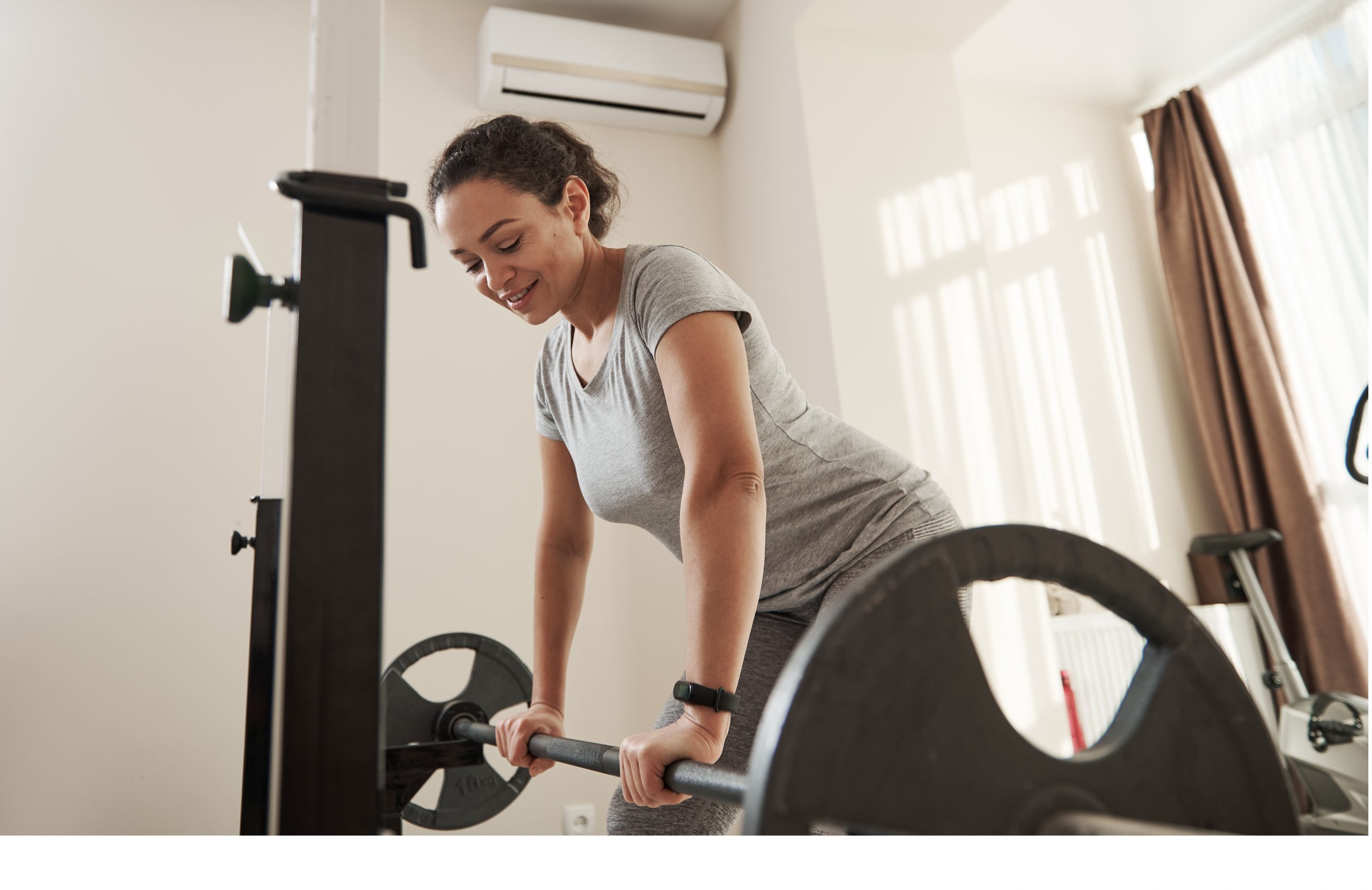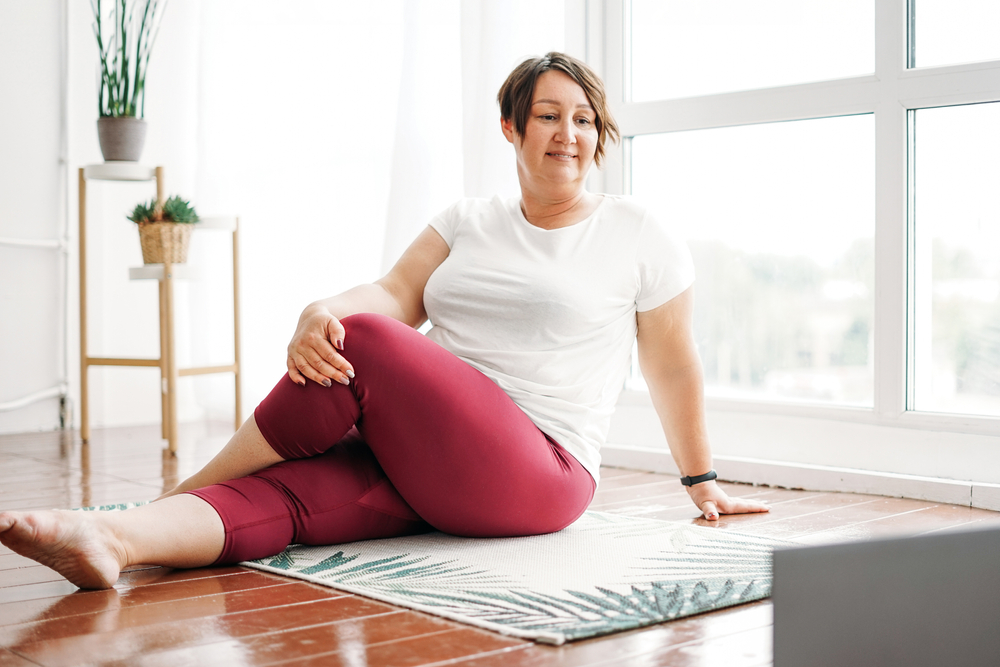How and when to push yourself during a workout.

Do you ever notice that on some days your workouts just feel that bit easier? Without understanding why, you can push on and achieve more than the last time you did a very similar workout.
Equally, some days the workout just feels harder than others. Do you push through? Or do you regress your session to something a bit more achievable? It’s a hard to decision to make without any more information.
In this month’s blog we wanted to explore this a little more, to understand why we feel this way, so that we can make an informed decision on whether to push through or making some adaptions, to help us achieve the best workout on that day. I’ll also give you some ideas of how to progress some of the basic movements and how to regress them.
Factors contribute towards a good/ bad workout day.
This isn’t an exhaustive list of influencing factors which may contribute to us having a good or a bad workout day, but it gives us things to consider. It also can provide us with a better view of how and why we feel different during different ties of the week or month.
- Amount of sleep you’ve had
- Hydration levels
- What you’ve eaten that day and the day before
- Any illness or injuries you might be carrying
- Pollution and hay-fever levels
- The weather (high pressure)
- Your stress levels
- Hormone levels
- What your activity levels have been like the days before.
Let’s look at a few of these factors in a bit more detail.
Sleep
Our bodies go into repair mode when we sleep and this can have a big impact on our workout, our concentration, our appetite, our strength levels and our general feeling of well-being. When you are tired you are much less likely to achieve an improvement or a personal best or even achieve any movement that day.
If you know you have had a bad night then listen to your body, what does it need from you? A gentler or less coordinated workout session, a rest day or maybe it doesn’t affect how you feel during your session.
What you have eaten and drunk the day before
If we haven’t fuelled ourselves for a workout it is unlikely, we will feel very strong during a workout and it applies to the day before, especially for a morning workout before breakfast.
Carbohydrates are the easiest food to turn into energy for a workout, which is why you can often feel drained on low carb diets. You are likely to feel light-headed during a workout if you haven’t eaten enough carbs that day or the day before. The same applies if you are dehydrated, the body just doesn’t have what it needs readily available to do what you are asking of it.
Alternatively, if you have eaten a good balanced meal in the lead up to the workout, then this is might be a day that you feel great when you move.
Stress
Short term stress can potentially help in a workout. When we talk about stress below and it having a negative effect on our workouts we are talking about chronic stress – day after day of elevated cortisol and adrenalin in our bodies can take its toll.
There is an increased risk of injury if we work out when stressed. The stress hormones prevent us going into repair mode and because motor control is also affected by too much cortisol, so we are much more likely to perform a movement incorrectly and get injured. Our concentration is affected by too much cortisol, and we may experience little to no motivation to move at all – it can also increase our cravings for sugar or alcohol.
Stress is cumulative in our bodies, and tough workouts do put a stress on our bodies that add to this. So, when we are going through times of continuous stress it is better to substitute out a hard weight’s session (or a long run) for some mediation or mindful movement like a walk in nature or a yoga or Pilates class. This change of focus is much kinder to us on these days and can help to break the cycle of cortisol and adrenalin production.
Hormone levels
There are certain times in the month when ladies are more likely to feel good when we move and times when we are less likely to feel energised. To understand this more we need to understand a bit more about when to exercise and when to ease back and give yourself a break.
- During the menstruation period some of our reproductive hormones (progesterone and oestrogen) drop and that can leave us feeling low in energy. This is the time to do easier sessions of movement, as performance can drop. This is also the time we need to be a bit easier on ourselves, not beating ourselves up when movement feels harder. Pilates, Yoga, walking, light strength sessions are a good alternative.
- In the next 5 days – after our period our oestrogen levels start to rise again, and we should start to feel our energy levels start to return. We can start to work a bit harder again.
- For the next 10 days after that oestrogen and testosterone start to peak and this is when we are likely to make gains, obtain a personal best or progress in our training or feel really good when we are moving. Ovulation occurs through this time.
- Post ovulation our energy is likely to taper off again, as we move back towards our period start date. Listen to your body and adapt intensity as needed.
Pregnancy and menopause are other times we will see big hormone changes that require us to adapt. During menopause try to avoid high intensity to reduce stress on the body’s changing systems. For more detail on harnessing your cycle for optimal training you can read ‘Period Power’ by Maisie Hill.

How to adapt workouts to suit how you feel that day – progression and regression.
When planning a workout, you can adapt the following factors of a workout
- Type of movement – is it the right thing that your body wants and needs that day.
- Range of motion – you make movements bigger or smaller
- Frequency – you can do more rounds, reps, sets of the workout
- Intensity – you can add a jump or a heavier of lighter weight.
- Time – you can make your workout shorter or longer depending how you feel.
Here are some examples of way to add or reduce intensity:-
| Exercise | Progression | Regression |
| Squat | Squat jumps, weighted squat | Half range, or use a suspension trainer |
| Jacks | Press jacks with one or two dumbbells | Half Jack (right side and then left side |
| Crunches | Add a hold in or pulses or a weight | Unweighted, half range |
| Deadlifts | Barbell or kettlebell deadlift | Unweighted (also called Good Mornings) |
| Lunges | Add direction changes inside/ forward/ reverse, or add jumps, or pulses or weights to increase the burden | Hold on to a chair, make them half range |
| Burpees | Full range to floor, add a tuck jump | Use a chair to do an elevated step out or squat thrust |
| Kettlebell swings | Heavier kettlebell, increase number of swings, add in alternating arms | Use a dumbbell instead or do the move unweighted |
| Reverse Flys | Hold out for longer, use a heavier weight. | Use a resistance band and row rather than fly. |
In conclusion, all of this is part of the intuitive movement principle, listening into the signals our bodies are giving us rather than overriding them because we think we should. So before you take the decision to push through or take a gentler work out, consider the contributing factors that we outline above, before making your final decisions.
Working with a personal trainer that listens and can adapt workouts for you on the day, rather than push you through the session regardless of how you feel, will make all the difference. Get in touch if you would like to explore further how this may work.
